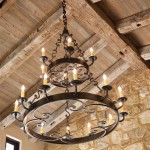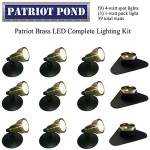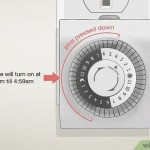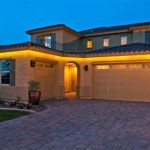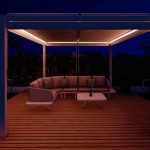Outdoor Down Lights: Illuminating and Enhancing Exterior Spaces
Outdoor down lights serve as a versatile lighting solution for residential and commercial properties. These fixtures, mounted overhead, project light downwards, creating a focused pool of illumination. The focused nature of down lighting makes it suitable for a variety of applications, from security lighting to aesthetic enhancements of architectural features and landscaping.
The selection and installation of outdoor down lights require careful consideration of factors such as light output, beam angle, color temperature, and fixture durability. Understanding these aspects enables property owners and lighting professionals to create effective and visually appealing outdoor lighting schemes.
The design of outdoor down lights has evolved significantly, incorporating energy-efficient light sources like LEDs and offering a range of styles to complement diverse architectural designs. This integration of efficiency and aesthetics has made them a popular choice for modern outdoor lighting solutions.
Key Applications of Outdoor Down Lights
Outdoor down lights find application in a wide array of settings, each leveraging their directional illumination to achieve specific purposes. Recognizing these applications facilitates informed decisions regarding fixture placement and selection.
One primary application is security lighting. Down lights installed above doorways, garages, and pathways can deter intruders and enhance safety at night. The focused beam of light illuminates potential hazards, making it easier to navigate the property and identify suspicious activity. The strategic placement of these lights minimizes dark spots, creating a well-lit environment that promotes security and peace of mind.
Another significant application is architectural highlighting. Down lights can accentuate architectural features, such as columns, arches, and building facades. By directing light onto these elements, the fixtures emphasize their texture, form, and color, adding visual interest to the property’s exterior. This application is particularly effective in showcasing a building’s unique design elements during the evening hours.
Landscape lighting also benefits greatly from outdoor down lights. These fixtures can illuminate pathways, gardens, and water features, creating a visually appealing and safe outdoor environment. Down lights can be strategically placed to highlight specific plants, trees, or sculptures, adding depth and dimension to the landscape. Furthermore, they can be used to create a soft, ambient glow that enhances the overall aesthetic appeal of the outdoor space.
In commercial settings, outdoor down lights are often used to illuminate entryways, parking lots, and loading docks. The consistent, focused light provided by these fixtures ensures safety and visibility for employees, customers, and visitors. The fixtures are also used to enhance the building's exterior, creating a welcoming and professional atmosphere.
Factors to Consider When Selecting Outdoor Down Lights
Choosing the right outdoor down lights requires careful evaluation of several key factors to ensure optimal performance and longevity. These factors include light output, beam angle, color temperature, material durability, and energy efficiency.
Light output, measured in lumens, determines the brightness of the light. The appropriate light output depends on the specific application. Security lighting typically requires higher lumen output to provide ample illumination, while ambient lighting may require lower lumen output for a softer glow. A thorough assessment of the area to be lit is crucial in determining the ideal lumen range.
Beam angle refers to the width of the light beam projected by the fixture. A narrow beam angle creates a focused spotlight effect, ideal for highlighting specific objects or features. A wider beam angle provides broader illumination, suitable for lighting pathways or larger areas. The choice of beam angle depends on the desired lighting effect and the area to be covered. For example, a narrow beam angle would be appropriate for highlighting a statue, while a wider beam angle would be better suited for illuminating a walkway.
Color temperature, measured in Kelvin (K), determines the hue of the light. Warmer color temperatures (around 2700K-3000K) produce a yellowish light, creating a cozy and inviting atmosphere. Cooler color temperatures (around 4000K-5000K) produce a whiter light, providing brighter illumination and enhanced visibility. The selection of color temperature is often based on personal preference and the intended purpose of the lighting. Warmer temperatures are often preferred for residential settings, while cooler temperatures are frequently used in commercial environments.
Material durability is a critical consideration for outdoor fixtures. The fixtures should be constructed from weather-resistant materials, such as aluminum, stainless steel, or durable plastics, to withstand the elements. Factors such as UV exposure, rain, snow, and temperature fluctuations can affect the lifespan of the fixture. Selecting fixtures with a high IP (Ingress Protection) rating ensures that they are protected against dust and water intrusion. A higher IP rating indicates greater resistance to environmental factors.
Energy efficiency is an increasingly important factor in lighting selection. LED down lights are significantly more energy-efficient than traditional incandescent or halogen lights. LEDs consume less energy and have a longer lifespan, resulting in lower operating costs and reduced environmental impact. While the initial cost of LED fixtures may be higher, the long-term savings make them a cost-effective choice. Furthermore, many LED fixtures are dimmable, allowing for further energy savings and customized lighting levels.
Installation Considerations for Outdoor Down Lights
Proper installation of outdoor down lights is essential for ensuring optimal performance, safety, and longevity. Installation should adhere to local electrical codes and be performed by a qualified electrician or lighting professional. Several factors need to be considered during the installation process.
First, the location of the fixtures must be carefully planned. The placement of down lights should be strategic to achieve the desired lighting effect and avoid light pollution. Consider the height of the mounting surface, the distance between fixtures, and the angle of the light beam. Proper placement minimizes glare and maximizes illumination where it is needed most. It is also important to consider the surrounding environment and ensure that the lights do not disturb neighbors or wildlife.
Second, electrical wiring must be properly installed and protected. All wiring should be weatherproof and buried or concealed in conduit to prevent damage from the elements or accidental contact. Grounding the fixtures is crucial for safety and helps prevent electrical shock. A qualified electrician can ensure that the wiring is correctly installed and meets all applicable safety standards. The use of weatherproof connectors and junction boxes is essential for protecting electrical connections from moisture and corrosion.
Third, the mounting surface must be strong enough to support the weight of the fixture. If the fixture is being mounted on a weak or unstable surface, it may be necessary to reinforce the surface before installation. This is particularly important for heavier fixtures or those mounted on surfaces exposed to strong winds. Proper mounting ensures that the fixtures remain securely in place and do not pose a safety hazard.
Fourth, regular maintenance is essential for keeping outdoor down lights in good working order. This includes cleaning the fixtures periodically to remove dirt, debris, and insects. Check the wiring and connections regularly for signs of damage or corrosion. Replace any burnt-out bulbs or damaged components promptly. Proper maintenance extends the lifespan of the fixtures and ensures consistent performance.
Fifth, consider using a lighting control system. A lighting control system allows for automated control of the outdoor down lights, such as setting timers or using motion sensors. This can further enhance security, save energy, and improve the overall convenience of the lighting system. Smart lighting systems can be controlled remotely via a smartphone or tablet, providing even greater flexibility and control.

Outdoor Wall Downlight Lwa217 12w Black Garden

Quadro Outdoor Square Up Down Wall Light Black Litecraft

Ip65 Led Exterior Cylinder Wall Light Up Down

Holme Black Outdoor Wall Lamp With Up Down Light Litecraft

Outdoor Lighting Downlighting Houston Lightscapes

Up Down Outdoor Wall Lights At Lumens

Ace Down Led Outdoor Wall Lights In Lite Lighting

Black Up And Down Outside Wall Light Lwa218 24w

Ip65 Waterproof Outdoor Led Downlights Rc Lighting

Single Light Led Outdoor Down Wall Fitting In Matt Black Finish N18945 Lighting From Castlegate Lights
Related Posts

